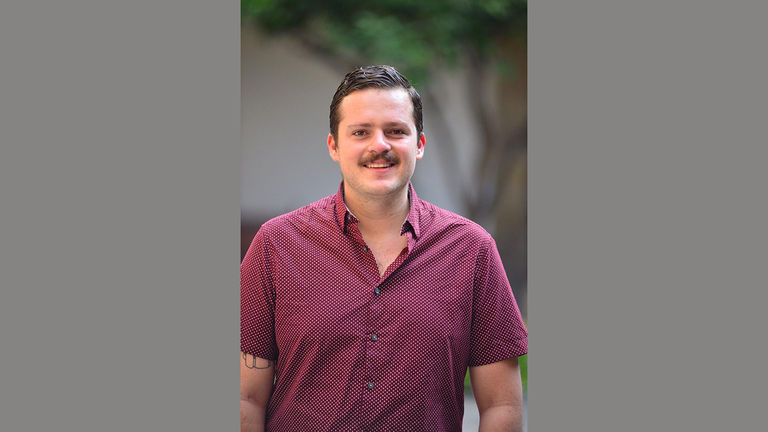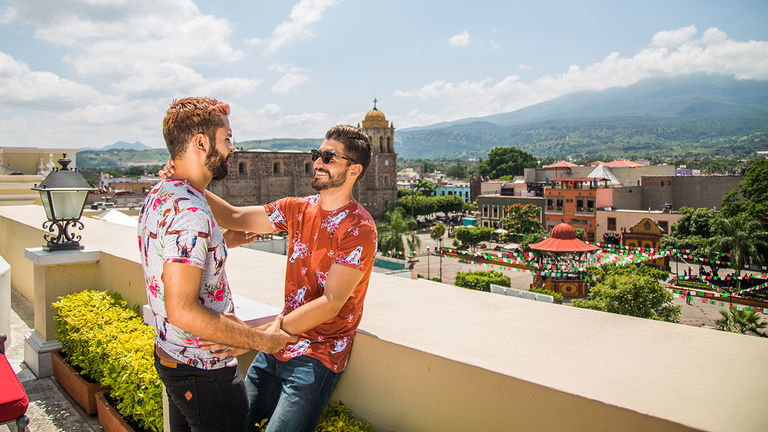Mexico is widely regarded as one of the most progressive Latin American nations when it comes to catering to communities who identify as Lesbian/Gay/Bisexual/Transgender/Queer or Questioning (LGBTQ), their rights and the development of LGBTQ tourism.
But some Mexican states stand out more than others when it comes to fully recognizing the value of LGBTQ visitors and locals alike. Jalisco — which is home to both the sophisticated metropolis of Guadalajara and the long-running LGBTQ hotspot Puerto Vallarta — is an ideal example of a region that takes a decidedly sophisticated approach to both civil rights and tourism.
In 2018, the state government appointed Andres Trevino to the post of sexual diversity director for Jalisco, an office that reportedly doesn’t exist in any other Mexican state.
In this interview, Trevino shares insight about what makes Jalisco such a welcoming place.
 Andres Trevino, the sexual diversity director for the Mexican state of Jalisco
Andres Trevino, the sexual diversity director for the Mexican state of Jalisco
Credit: 2021 Andres TrevinoWhat makes Jalisco different from other states when it comes to LGBTQ rights and tourism?
Jalisco is the first — and at the moment, the only — state to recognize transgender kids and youth rights to their legal identity. We are one of the few states that has legislation over hate crimes, and we have a local law to promote equality that explicitly establishes the affirmative actions that must be taken to promote LGBTQ equality.
Jalisco has long been recognized as an LGBTQ tourism destination. Puerto Vallarta and Guadalajara are cities with an enormous variety of cultural and entertainment activities for local and visitors. That has created a “virtuous circle,” where being a tourist destination has made our institutions work on creating better conditions for our visitors and locals.
For at least 40 years, Jalisco has had visible actors and activities of the LGBTQ population, which has positioned Jalisco as one of the top Mexican destinations most open to diversity.
Why do you think Jalisco as a state is so welcoming?
For at least 40 years, Jalisco has had visible actors and activities of the LGBTQ population, which has positioned Jalisco as one of the top Mexican destinations most open to diversity.
We must understand separately the contexts of Puerto Vallarta and Guadalajara, where each one has their own path toward becoming a high-profile LGBTQ destination. In the case of Puerto Vallarta, being an LGBTQ destination has been part of its identity from the very beginning of its development as a touristic site. Some of the first gay visitors to arrive in Puerto Vallarta were part of the crew that filmed “The Night of the Iguana,” which gave Puerto Vallarta international visibility. [They] promoted the site to other Californians in the LGBTQ community.
The case of Guadalajara is a bit different. LGBTQ visibility has been a political act of resistance that started in the 1980s, even though in past decades certain cantinas were known in the LGBTQ community. Since then, the LGBTQ [community] has been gaining respect and representation. Guadalajara's Pride parade has become one of the largest in Latin America, and we've been in the international spotlight as a city capable of holding international events, such as the Gay Games, which we are seeking to celebrate in Guadalajara in 2026.
 According to the Ministry of Tourism of Mexico, it’s estimated that up to 3.5 million people belonging to the LGBTQ community visited Mexico in 2017.
According to the Ministry of Tourism of Mexico, it’s estimated that up to 3.5 million people belonging to the LGBTQ community visited Mexico in 2017.
Credit: 2021 The Guadalajara Tourism BoardHow important is the LGBTQ market for tourism in Jalisco?
According to the Ministry of Tourism of Mexico, it’s estimated that up to 3.5 million people belonging to this community visited Mexico in 2017, with an average stay of four nights in the low season. According to information from 2017 shared by the Ministry of Tourism of Jalisco, the LGBTQ segment represents 10% of its total visitors; in Puerto Vallarta, it represents 20%. In 2018, 12% of the national and international tourists who arrived in Jalisco were from the LGBTQ community.
What makes Puerto Vallarta such a legendary destination for LGBTQ travelers?
Puerto Vallarta has grown as a tourist destination in part [because of] the LGBTQ American and Canadian travelers who have visited it since the 1960s. Even though certain spaces like the Malecon and Los Muertos Beach have long been recognized by the LGBTQ community, it was in the 1990s that local authorities started to strongly take actions to elevate Puerto Vallarta’s profile as an LGBTQ destination.
Why should LGBTQ travelers also consider visiting other places in Jalisco?
Jalisco is a very big state that has many things to offer besides Puerto Vallarta. Guadalajara is a city they must consider visiting … [it] has always been a cultural and creative hub. Each June, Museo Cabanas has the Festival Androgina, a platform for local and national queer artists.
Every year during Guadalajara's International Film Festival, the queer cinema festival, Premio Maguey, takes place. It’s one of the most important LGBTQ film festivals in the world. During June, the city is full of activities around the Pride celebrations, like our local Guadalajara Pride, which is one of the largest LGBTQ parades in Latin America.
How else do you attract LGBTQ travelers?
We've been [participating in] local cultural and sporting events such as Pride Guadalajara, Vallarta Pride, Diversity Sports Tournament, the Prohibido Festival, Premio Maguey, etc., by [being involved in], sponsoring and participating in workshops and promotion at a national and international level. We've been involved in bids for and co-organization of international events like the Gay Games Annual General Assembly 2018, Guadalajara InterPride Annual Convention 2022 and Guadalajara Gay Games 2026.